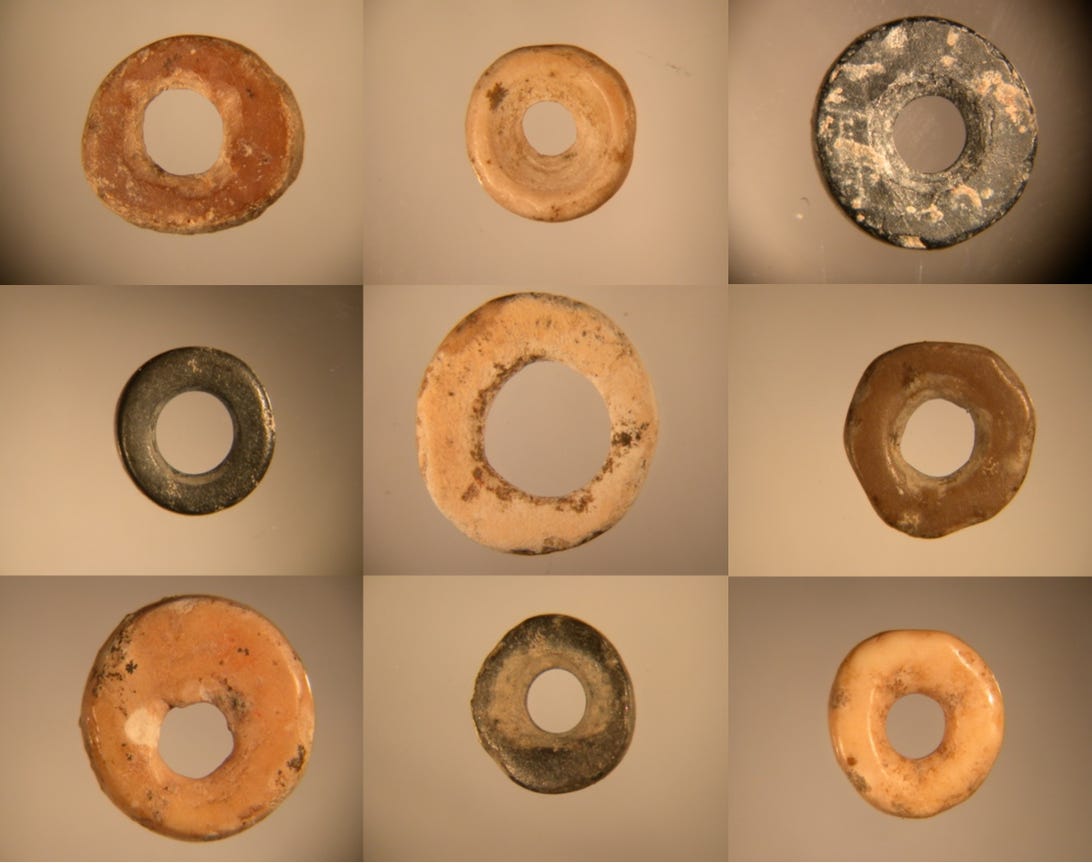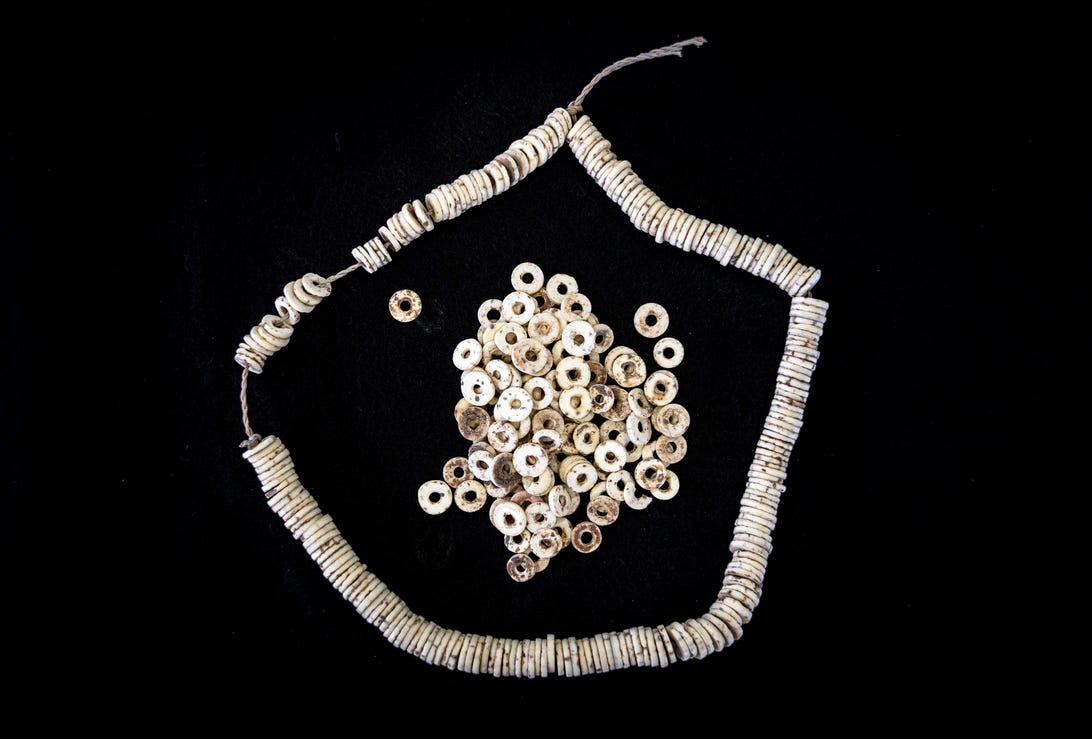
Ancient ostrich eggshell beads are clues to the oldest social network.
Jennifer MillerWay, way, waaay before the invention of Facebook, Twitter and TikTok, researchers say, a social network once existed in Africa -- and the striking revelation comes to us through a bunch of ostrich eggshell beads.
Among the oldest ornaments ever made, dating back as much as 50,000 years, these neutral-toned, Cheerio-shaped beads, made of ostrich eggshells, are unique imprints of ancient times.
"These tiny beads have the power to reveal big stories about our past," Jennifer Miller, of Germany's Max Planck Institute for the Science of Human History, said in a statement. Miller is also lead author of a study on the ancient network, published Monday in the journal Nature.
Long ago, artisans would snack on ostrich eggs and break the remaining shells into many pieces. They'd then drill a hole through the center of the pieces, presumably to string them into a necklace. Each one can be shaped and sized according to taste, so different cultures are thought to have crafted their own styles. In fact, the practice is still around today.

A string of modern ostrich eggshell beads from eastern Africa.
Hans SellMapping out where each design comes from can help us understand cultural trends and exchanges across regions. The tracking procedure is akin to tracing fashion statements, connecting them to their trendsetters, then connecting the trendsetters to each other.
"It's like following a trail of breadcrumbs," Miller said. "The beads are clues, scattered across time and space, just waiting to be noticed."
'The pattern is clear'
On the hunt for such cultural pathways in Africa, Miller and fellow researchers analyzed 1,500 ostrich eggshell beads from the last 50,000 years, all found within the continent. Studying them for over a decade, they realized that some pieces -- dating back between 50,000 and 33,000 years ago, during the Upper Paleolithic era -- were identical in characteristics like diameter and thickness.
That suggests a nearly 20-millenia-long crossover of information between ancient people.
"The result is surprising, but the pattern is clear," study co-author Yiming Wang, also of the department of archaeology at Max Planck Institute, said in a statement. "Throughout the 50,000 years we examined, this is the only time period that the bead characteristics are the same."
Here's the kicker. Some matching beads originated in the eastern part of Africa and others in the southern part, some 1,864 miles (3,000 kilometers) apart, leaving a few potential explanations: people in both regions simultaneously came up with the exact same bead blueprint; one culture did it first, then shared the pattern with the other; or perhaps gift exchanges occurred cross-country.
Unless telepathy or sheer coincidence was involved, the latter options are probably the case. But because the distance between locations is so large, design information or gifts must have traveled through not one, nor two, but several people before reaching a final destination. Imagine an unusually successful game of telephone, or in other words, a word-of-mouth social network.
This evidence, the researchers say, points to the oldest social network ever found.
Unfortunately, about 33,000 years ago, bead twins stopped appearing, per the team's database. The study speculates that the disappearance stemmed from documented climate changes of the time, such as dramatic rainfall and flooded riverbanks, which created a barrier between the two regions.
Eventually, all communication likely ceased. Fast-forward many thousands of years and a slew of modern social networks -- cue Facebook.
"network" - Google News
December 20, 2021 at 11:13PM
https://ift.tt/33PBxIx
Scientists follow ancient clues to reveal oldest social network - CNET
"network" - Google News
https://ift.tt/2v9ojEM
https://ift.tt/2KVQLik
Bagikan Berita Ini














0 Response to "Scientists follow ancient clues to reveal oldest social network - CNET"
Post a Comment